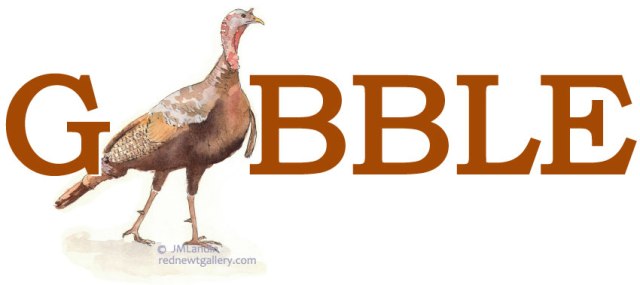
This is the time of year for egg hunts, Cadbury Crème Eggs, and multicolored plastic eggs filled with jellybeans. Yet beyond the dye, chocolate, and sugar, a deeper meaning lies in one of Easter’s most cherished traditions.
No scriptural basis of course exists for having Easter eggs, just as no accounts in the Gospels report that several winged favorites tended to Jesus during the Crucifixion (e.g., a swallow pulling at the crown thorns and a red crossbill at the nails).1 However, the impulse to incorporate birds with an important event and their eggs with a major recurring holiday seems natural enough. After all, the dove is a symbol for the Holy Spirit and for Christianity as a whole. Why wouldn’t birds have a role in Easter? Also, birds in general are much loved, and eggs hatch to create more birds.
Overall, many factors are crucial to the Easter egg tradition, and these include associations with the time of year in which the holiday falls, social and religious developments arising from Lent many centuries ago, and even the possible assimilation of earlier non-Christian customs.
The Egg as Symbol
Always celebrated on the first vernal Sunday following a full moon, Easter has an apparent connection with spring. Since this is the season when migrating birds are returning and mating, the holiday’s association with eggs is not surprising. Besides the many nests potentially visible this time of year, eggs also share some similarities in shape and color to the moon. However, despite the satellite’s role in determining Easter’s annual date, any lunar connection to Easter eggs is probably marginal at best. The egg’s popularity rests primarily as a potent symbol of life. In the case of Easter, it represents Jesus’s Resurrection2 and the potential of eternal life for his followers.
Throughout the world, from antiquity to today, eggs traditionally have signified birth/creation and rebirth/revival.3 They have served this function in several creation myths, as well as in funeral practices, both as iconography and as objects buried in human graves.4, 5 As a result of practices centuries ago, Islamic mosques and some Christian churches still hang preserved eggs from ostriches as decorations.6 The Montefeltro altarpiece painting by Italian Renaissance artist Piero della Francesca famously depicts such an egg above Madonna and child.7 The most extravagant examples of egg-inspired art came several centuries later when Peter Carl Fabergé created his ornate Easter egg designs for the Russian imperial family.
The symbolic power of the egg extends to its use as a ceremonial food by Christians and non-Christians alike. A hard-boiled egg is part of the Jewish Passover Seder. The custom of decorating eggs, which originated in ancient Persia, survives today in Iranian New Year (vernal equinox) celebrations.8 In addition, the elaborate beeswax-resist designs (e.g., pysanky, kraslice) of Eastern Europe’s Slavic peoples may have predated their conversion to Christianity.9 By the thirteenth10 or fourteenth centuries,11 Christians in Europe began coloring eggs for Easter using red dye to symbolize Christ’s blood.12 Whether this practice involved outside influences is not necessarily important to appreciate and enjoy Easter eggs today, for any religion can absorb preexisting customs and imbue them with new meaning.
The Influence of Lent
At least in part, the painting of Easter eggs more than seven hundred years ago appears to have developed in response to Lenten restrictions and farmyard realities.13, 14 Eggs were among the foods regularly given up during the fasting period, but those laid by domesticated chickens and geese could be collected and decorated. With the arrival of Easter Sunday, the eggs were eaten to mark the end of the fast and celebrate the holiday.15
By the early 1800s, chocolate versions of these eggs debuted in Western Europe.16, 17 Playing off of this Easter candy theme, the American confections company Just Born took the next step, popularizing its marshmallow-shaped chicks—called Peeps—back in the 1950s.18 So today, along with chocolate egg-shaped candies, we have all sorts of bird-inspired Easter candy.
Sources:
- Ingersoll, E. Birds in Legend, Fable, and Folklore. New York: Longman, Green and Co., 1923. pp. 112–115.
- History.com. “Easter Symbols and Traditions.” History.com: http://www.history.com/topics/holidays/easter-symbols.
- Killgrove, K. “The Curious History of Easter Eggs from Birth to Burial,” 3/26/2016. Forbes: https://www.forbes.com/sites/kristinakillgrove/2016/03/26/the-curious-history-of-easter-eggs-from-birth-to-burial/#6ebea03a16af.
- Killgrove, K.
- Green, N. “Ostrich Eggs and Peacock Feathers: Sacred Objects as Cultural Exchange between Christianity and Islam”. Al-Masaq, Volume 18: No. 1, March 2006. p. 30.
- Green, N. pp. 35–39.
- Green, N. p. 36.
- Killgrove, K.
- Lesiv, M. The Return of Ancestral Gods: Modern Ukrainian Paganism as an Alternative Vision for a Nation. Montreal, CA: McGill-Queen’s University Press, 2013. pp. 126–133.
- History.com.
- Green, N. p. 36.
- D’Costa, K. “Beyond Ishtar: The Tradition of Eggs at Easter,” 3/31/2013. Scientific American: https://blogs.scientificamerican.com/anthropology-in-practice/beyond-ishtar-the-tradition-of-eggs-at-easter/.
- McRoy, A. “How the Fast of Lent Gave Us Easter Eggs,” 2/2010. Christianity Today: http://www.christianitytoday.com/history/2010/february/how-fast-of-lent-gave-us-easter-eggs.html.
- D’Costa.
- McRoy, A.
- Godiva Chocolate. “The History of Chocolate Easter Eggs.” Godiva Chocolate, Inc.: http://www.godivachocolates.co.uk/The+History+of+Chocolate+Easter+Eggs.html.
- BBC Newsround: “Why do we have Easter eggs and the Easter Bunny?” 3/27/2016. BBC: http://www.bbc.co.uk/newsround/17597617.
- History.com.

 Patterns exist throughout nature. For people ages ago, such things were considered messages from the gods. Decoding these encrypted communications was at the heart of ancient divination, a common practice of early civilizations.
Patterns exist throughout nature. For people ages ago, such things were considered messages from the gods. Decoding these encrypted communications was at the heart of ancient divination, a common practice of early civilizations.






